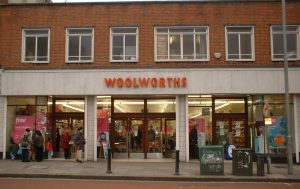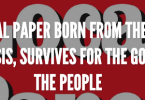The Sunraysia Daily, one of Australia’s oldest daily newspapers, has resurrected its print edition after a COVID19-related shutdown.
The Mildura-based paper had operated as the area’s only daily news outlet for a century, due to celebrate its 100th birthday this October.
The news outlet had been shut down due to COVID19-related financial problems – but stood-down staff weren’t going down without a fight.
They committed to reviving a print edition, even if it meant working for free.
Sunraysia Daily journalist Brooke Littlewood said her job meant everything to her and was happy to continue to work while being stood down.
“It’s just devastating to see these closures, not just for the news outlets around Australia but the effect on local communities,” she said.
The paper moved its production online as a cheaper alternative to printing.
But Australian Census data shows more than a quarter of Mildura residents do not have access to the internet at home, not even on a mobile phone.
It’s almost double the average number of households without internet access in Victoria and highlights why print journalism is a necessity in regional areas.
Elliot Newspaper Group managing director Ross Lanyon said he was grateful for his staff’s continued effort through the tough times.
However, he was angry corporate advertisers had pulled ads from the paper.
Businesses including Coles and Woolworths pulled their advertising from local papers at the start of the crisis, but took out whole-page ads in metropolitan newspapers.

Image: WIKIMEDIA COMMONS
Woolworths media representative Mike Scott said the corporation wanted to “focus on broad reach channels that allowed us(sic) to deliver updates in the most timely manner”.
“The Sunraysia Daily became a weekly publication, with an advertising deadline of two days prior to publication. With community announcements in relation to COVID-19 changing on a day to day basis, it was not a practical and up to date way to keep the community informed,” he said.
Mildura Council Arts and Culture Councilor Jason Modica said the loss of the daily paper put the community at a huge disadvantage.
He said Mildura had attracted a lot of corporate development in the past decade – but that development did not necessarily benefit the community.
“You had this massive growth and corporatisation of everything, but nobody gets involved with big corporates. Big corporates tend to just want that return.
“In regard to withdrawing the advertising, how does the community feel about that? If they’re here for all of the benefits of the big spend, and this is interesting through COVID, where they’re still open and a lot of other small businesses have to close. But now they’re saying we aren’t worthy enough to have their advertising dollars spent in our community? It seems a bit disingenuous,” he said.
Cr Modica also said many Mildura residents felt hard done by in relation to government spending.
The area lost physical connection to Melbourne in 2017, when the only train line connecting Mildura to the rest of Victoria was closed down.
The NBN roll out plan should have helped residents to reconnect virtually.
However, Cr Modica said the infrastructure changes of fibre-to-the-node placed residents at a further disadvantage.
“The deeper concern is that there was a great plan for NBN throughout the whole country in regard to fibre to the home. That was rearranged after the federal election to fibre-to-the-node. That has done nothing but disadvantage people in rural Australia. It is the people furthest away from large capitals that benefit the least.
“There are 55,000 people in the municipality of Mildura, it’s a lot to consider and a lot of people who still would like to be connected with their friends and family in capital cities. There is a lot to consider in why it hasn’t happened. Who has benefited and who has not?” he said.
The Media, Entertainment and Arts alliance called the closure of the paper a “knee-jerk reaction”.
However, the MEAA also highlighted that struggling regional publications need government support to keep running during tough times.
The organisation also said governments needed to acknowledge the crucial role local news plays in regional communities.
“The media is an essential service right now. Media outlets have a heightened responsibility to their communities. They provide a lifeline that binds a community together and bolsters resilience. Their local knowledge cannot be replaced by media outlets in the bigger cities,” said MEAA media representative Marcus Strom.
“If the papers can’t survive, the government must step in and financially support them as an essential service until this crisis has passed,” he said.
Managing director Ross Lanyon said there were plans to resume daily publication once the impacts of COVID19 had eased and advertising revenue returned.
At the time of publishing, the Sunraysia Daily had resumed print of its Wednesday and Saturday editions.
Featured image: PIXABAY



